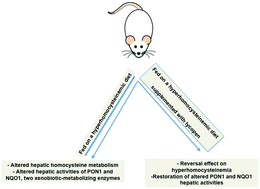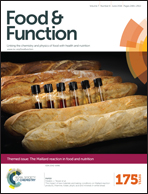Hepatoprotective effects of lycopene on liver enzymes involved in methionine and xenobiotic metabolism in hyperhomocysteinemic rats
Abstract
Hyperhomocysteinemia, defined by an increased plasma homocysteine level, is commonly associated with chronic liver diseases. A link between the elevated homocysteine level and oxidative stress has been demonstrated. Indeed the pathogenesis of liver diseases in the case of hyperhomocysteinemia could be due to this production of oxidative stress. Many studies have demonstrated the antioxidative properties of lycopene, a carotenoid. Therefore, the present study was designed to induce hyperhomocysteinemia in male Wistar rats in order to analyze the effect of lycopene supplementation on homocysteine metabolism, on phase I and phase II xenobiotic-metabolizing enzyme activities, and on liver injury by histological examination and analysis of biochemical markers. We found that rats with a high methionine diet showed abnormal histological features, with an increase of serum homocysteine, alanine aminotransferase and aspartate aminotransferase levels, decreased hepatic cystathionine beta synthase and S-adenosyl-homocysteine hydrolase activities and an increased hepatic malondialdehyde level. We demonstrated the reversal effect of lycopene supplementation on hyperhomocysteinemia. Taken together, these findings provide additional clues on the hepatoprotective effects of lycopene.


 Please wait while we load your content...
Please wait while we load your content...